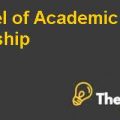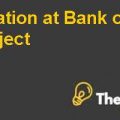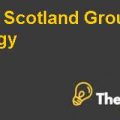Introduction
This case introduces Avera, a Multinational company of French origin, specializing in renewable energy and nuclear power, with headquarters established in Paris. The company was incorporated in the year 1981 through the merger of French companies including COGEMA and Framatome. Furthermore, Avera had shown significant growth since the year of its incorporation with its revenues constantly increasing both in the French nuclear power and European markets as well as it planned to expand in other potential market with relative higher energy demands such as China. Moreover, in light of the increase in demand for energy and the rise in oil prices, attributed to the fading memory of accidents related to nuclear plant in the United State and Russia, presented a huge opportunity for any Power generating company to take advantage of the situation and enhance its economies of scale in the market.
However, Avera’s incorporation converted the old power market into civilian nuclear power market, thus allowingitself to be recognized as France nuclear success story by 2008. On the other hand, France had developed an efficient nuclear power plant infrastructure comprising of 59 nuclear plants, which accounted towards producing around 76% of its electric energy. In order to grow, Avera invested heavily in developing an advanced generation III+ power plant known as European pressurized water reactor (EPR), which was the first of its kind under construction in Finland (OL3) and Flamanville, France. Furthermore, the company had also signed contracts with China to build two EPRs in its Guangdong province and was in the process of negotiating to sell new plants to Europe, United States, Middle East, United Kingdom, South Africa and India, which, in turn, increased overall market position and allowed them to increase their annual turnover. This enabled them to invest in other technological innovation, thus decreasing their cost of production through automation or other similar innovations.
Areva Harvard Case Solution & Analysis
Industrial Conflict
It can be assessed that the policymakers or regulating bodies of countries struggled to solve the issue of raising CO2 emissions caused from the production of energy through Coal or gas powered plants. This, in turn, compelled electric utilities or governments, who tried to avoid attaining energy from foreign sources to reevaluate nuclear energy, as one of the benefits of producing energy from nuclear power was that they exhausted less CO2 as compared to coal plant. Hence, the cost of CO2 emission faced by the Coal or gas powered plants would not be as significant. However, it was still considered that the cost of establishing a coal or gas powered plant was significantly lower than the cost of establishing a nuclear power plant. Moreover, it was determined that, this would solve the issue of raising level of CO2 emissions, which caused significant harm to the environment and the people inhabiting it.
Problem Statement
The primary issue faced by Avera, which otherwise compromised its positive growth and market potential wasthat, a lossamounting to 1.7 billion was incurred with respect to its EPR project under construction in Finland (OL3) was incurred, which had attributed towards the decrease in its operating income form 1.2 billion in 2007 to 417 million.....................
This is just a sample partical work. Please place the order on the website to get your own originally done case solution.











